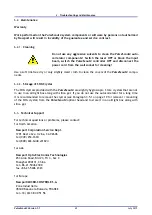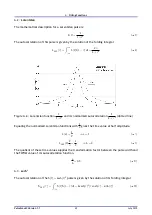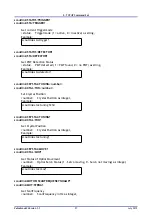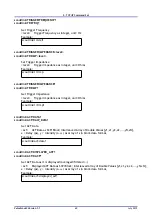
A.
Fitting Functions
A.2.
Lorentzian
The mathematical description for a Lorentzian pulse is:
L
(
t
) =
1
1
+
t
2
(A.6)
The autocorrelation of this pulse is given by the solution of the folding integral
L
ACF
(
τ
) =
Z
∞
−∞
L
(
t
)
L
(
t
−
τ
)
dt
=
2
π
4
+
τ
2
(A.7)
Figure A.2.: Lorentzian function
1
1
+
t
2
and its normalized autocorrelation
4
4
+
τ
2
(dotted line)
Equating the normalized Lorentzian functions with
1
2
gives the time value at half amplitude.
L
(
a
) =
1
2
⇒
a
=
1
(A.8)
L
ACF
(
b
)
2
π
=
1
2
⇒
b
=
2
(A.9)
The quotient of these time values supplies the transformation factor between the pulse width and
the FWHM value of its autocorrelation function.
a
b
=
0
.
5
(A.10)
A.3.
sech
2
The autocorrelation of the
S
(
t
) =
sech
(
t
)
2
pulse is given by the solution of its folding integral
S
ACF
(
τ
) =
Z
∞
−∞
S
(
t
)
S
(
t
−
τ
)
dt
=
4csch
(
τ
)
3
(
τ
cosh
(
τ
)
−
sinh
(
τ
))
(A.11)
Pulse
Scout2 Version 1.1
49
July 2015












































